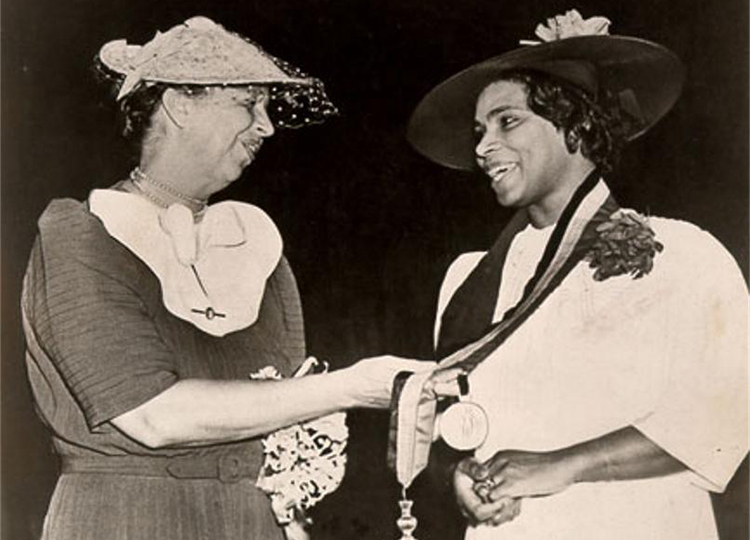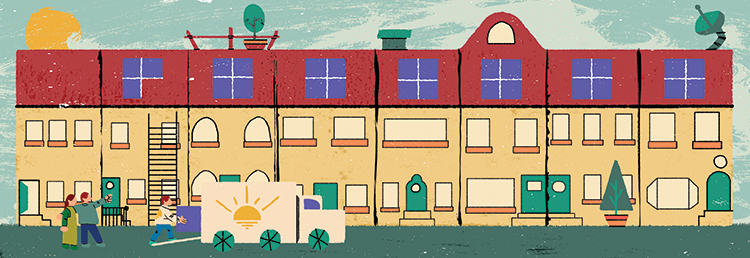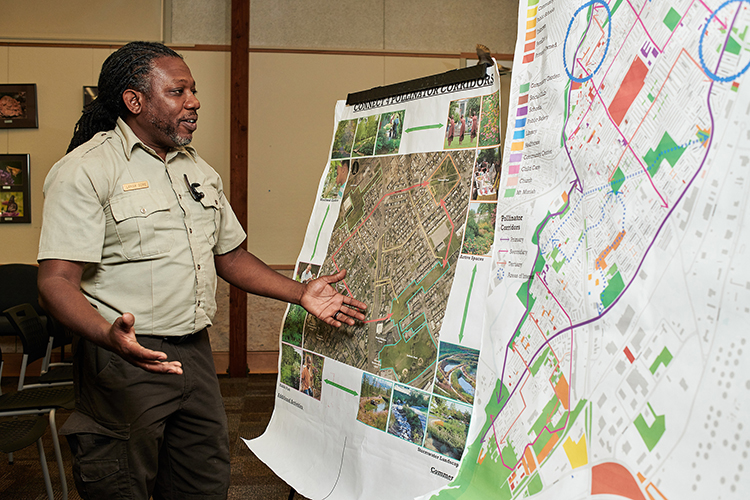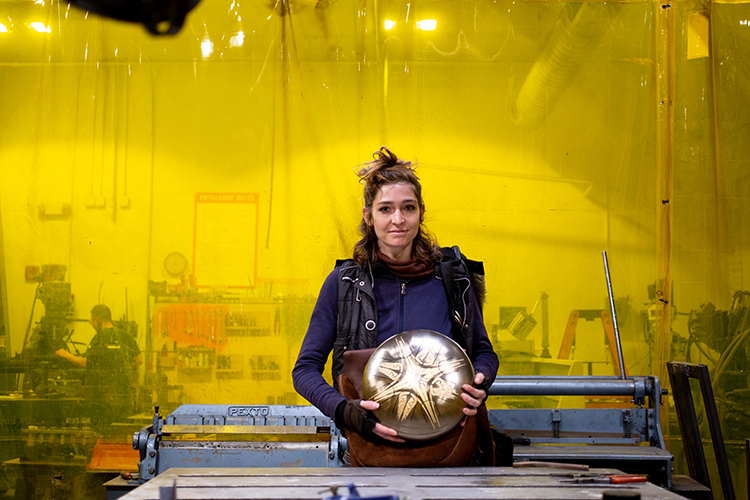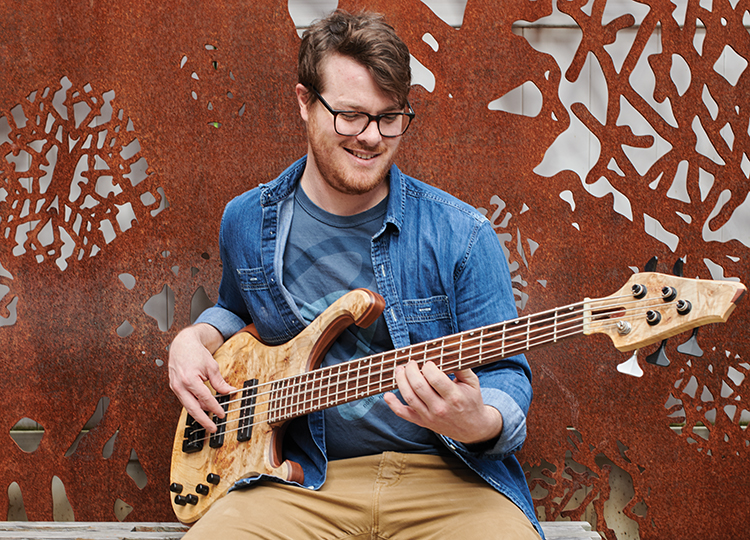by Constance Garcia-Barrio
South Philly homegirl Marian Anderson (1897–1993) put on a concert at Washington D.C.’s Lincoln Memorial that called the world’s attention to black talent and domestic racism. That 1939 performance led some historians to call Anderson the mother of the civil rights movement.
Anderson made a long leap from her folks’ South Philadelphia home. John Anderson, her father, 6’2”, worked in the refrigeration room at the Reading Terminal Market, and had a small business selling coal and ice. Her mother, Anna Anderson, a former schoolteacher from Virginia who stood 4’9”, married John after a three-and-a-half-week courtship.
“We were poor,” Anderson wrote of her childhood in her 1956 autobiography, “My Lord, What a Morning,” “but [had] a wealth of music and love…”
When her father died after an accident at Reading Terminal, 12-year-old Anderson, her mother and two younger sisters moved in with her paternal grandparents. Her mother began scrubbing floors at Wanamaker’s department store to make
ends meet.
Anderson’s velvet contralto voice became well-known in choirs at Union Baptist Church, at the intersection of 19th and Fitzwater street, which her mother attended.
“Singing in the presence of other people seemed … a normal activity,” said Anderson, who as a schoolgirl sang at other churches and organizations, accompanying herself on the piano. “[Sometimes] I was paid as much as a dollar.”
When Anderson sought singing lessons at a local music school, a receptionist turned her away because she was black.
More shocks laid ahead.
Invited to sing at a concert in Savannah, Anderson traveled south by train with her mother.
“When the conductor called out, ‘Coming into Washington,’ [we] black passengers went to the Jim Crow car … behind the engine,” Anderson wrote. The car’s filth and stuffiness stunned her. “If you raised a window… you would get, along with your fresh air, smoke and soot from the train’s engine.”
The African-American community encouraged her. At 18 years old, Anderson caught the attention of the Fishers, a distinguished black Delaware family. Invited to their home to give a short performance, she met Orpheus “King” Fisher. King, a future architect, became her boyfriend, nudging out his older brother, who also fancied the young singer.
Eager for guidance, Anderson landed an audition with renowned Philadelphia vocal teacher Giuseppe Boghetti. Boghetti, who already had many students, only heard her grudgingly. But she “… poured out ‘Deep River,’” he later said, “and made me cry.”
Boghetti’s acceptance raised another hurdle. Anderson lacked his $50 monthly fee for lessons, but Union Baptist stepped up. In May, 1920, the church held a gala concert that netted $600 for her to put toward classes.
A taskmaster, Boghetti assigned Anderson vocal exercises, helped her work on her pianissimo and tutored her in Italian for operatic arias. It paid off, as Anderson’s performance fees rose.
When a house at 762 S. Martin St. went on the market, Anderson bought it with her savings. That building, now the site of the National Marian Anderson Museum and the home of the Marian Anderson Scholar Artist Program to develop singers, gave Anderson, as well as her mother and two sisters, a place of their own.
Emboldened by success, Anderson spread her wings too far. A concert she gave in New York City’s Town Hall in 1924 drew a sparse audience. Critics also noted that words in lieder, a kind of German song, tripped her up.
“I was embarrassed … lost and defeated,” Anderson wrote. She refused to sing for a year, and even considered pursuing her second career choice: medicine.
In time, Anderson not only returned to Boghetti’s classes, but studied and performed in Europe in the 1930s, becoming an expert singer of lieder. In Moscow, she met black actor, lawyer, activist and bass baritone Paul Robeson (1898-1976), who avoided American racism by sometimes living in Soviet bloc countries.
In 1939, after returning from Europe, Anderson found herself in a political maelstrom. Her manager, Sol Hurok, tried to reserve Washington D.C.’s Constitution Hall for a performance. The Daughters of the American Revolution (DAR), owners of the hall, refused because of Anderson’s race. Eleanor Roosevelt, then first lady, resigned from the DAR in protest, igniting
national headlines. Hurok welcomed the DAR’s stance. It “… presented Marian’s friends with an issue big enough to bring [years of racist treatment] … into the open,” he said.
Roosevelt pushed Harold Ickes, then secretary of the interior, to arrange for a public Easter concert at the Lincoln Memorial. Anderson became a reluctant warrior.
“I had become … a symbol representing my people,” she wrote. “I had to appear.”
On April 9, 1939, flanked by Supreme Court justices, congressmen, FBI agents, Roosevelt and Ickes, Anderson stepped up to the microphones amassed so that radio audiences—including folks on Martin St., said to have their doors open to let Anderson’s voice fill the block—could hear her. At the Lincoln Memorial, a crowd of 75,000 gazed up at the vocalist.
“For a desperate second, I thought the words [of ’The Star-Spangled Banner’] would not come,” Anderson said. “I sang; I don’t know how.”
That audience included then-10-year-old Martin Luther King Jr., who remained inspired by Anderson’s performance throughout his life. Her open-air concert beside VIPs launched a new kind of anti-racist demonstration, a tactic that King
would borrow.
More developments followed. Anderson’s boyfriend, Fisher, had asked her annually for some 20 years to marry him. Finally, in 1943, at age 46, she said yes.
“King and I have had some lovely times together,” she wrote, though a cross was once burned at their Connecticut home. In 1955, Anderson became the first black to sing—despite death threats—in a role in New York City’s Metropolitan Opera Company.
Anderson retired from concert singing in 1965, but visitors can experience her life at the Martin St. museum, a location on the National Register of Historic Places.
The museum, founded by Anderson’s late protégée, concert pianist Blanche Burton-Lyles, welcomes individual and group tours. Visitors can see a good documentary, vivid photographs, some of Anderson’s elegant gowns and other memorabilia.
“We offer a living history experience that immerses you in Marian Anderson’s struggles and ultimate victory,” says Jillian Patricia Pirtle, 31, concert singer and executive director of the museum.
Pirtle, who runs the museum alone, noted that the site depends
solely on entrance fees, donations and special events. “Marian and Orpheus: A Love Story,” is slated for this summer, and George Gershwin’s “Porgy and Bess” will run in November. For more information, visit the Marian Anderson Museum and Historical Society’s website or call (215) 779-4219.

